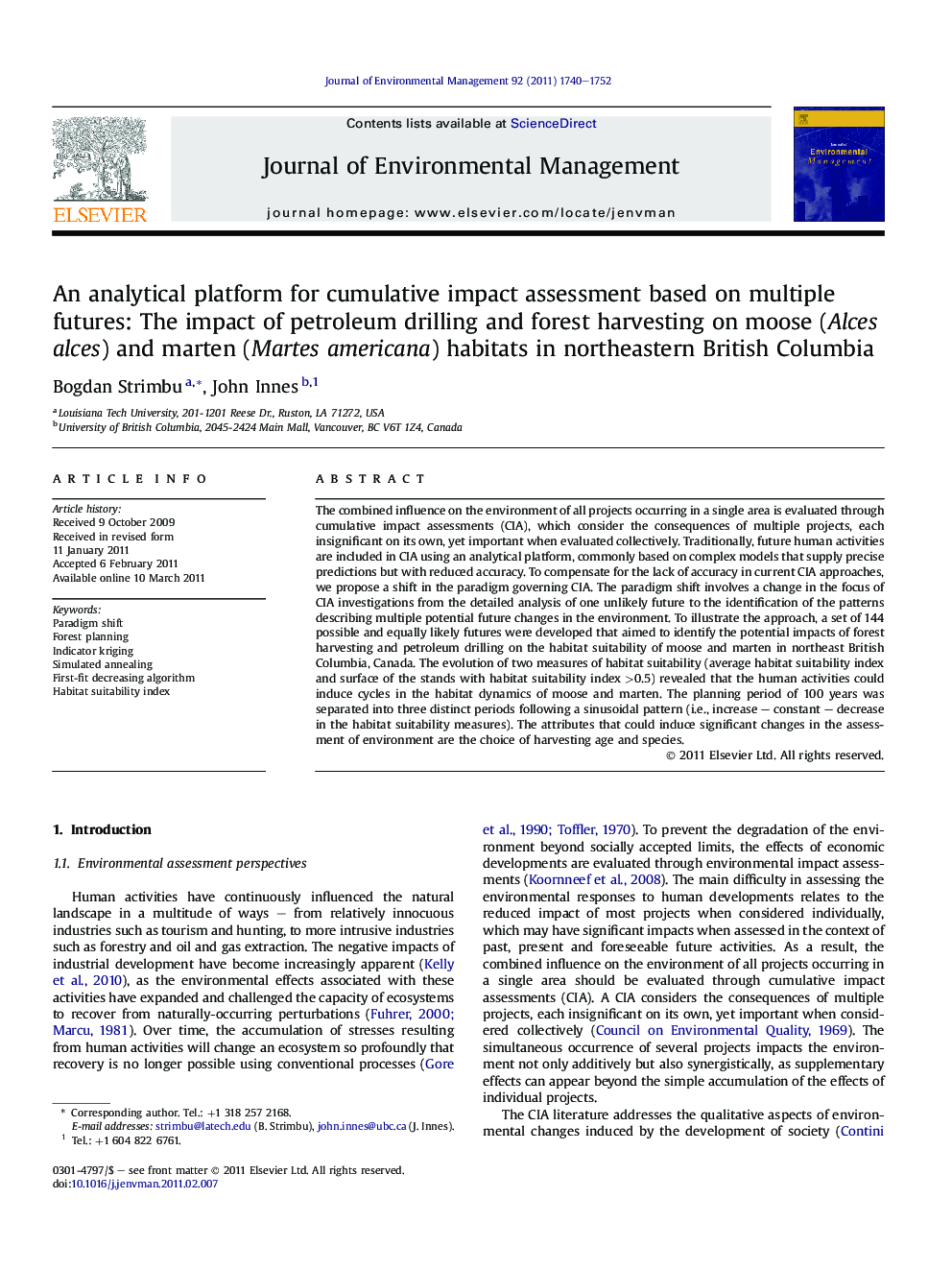| Article ID | Journal | Published Year | Pages | File Type |
|---|---|---|---|---|
| 1057156 | Journal of Environmental Management | 2011 | 13 Pages |
The combined influence on the environment of all projects occurring in a single area is evaluated through cumulative impact assessments (CIA), which consider the consequences of multiple projects, each insignificant on its own, yet important when evaluated collectively. Traditionally, future human activities are included in CIA using an analytical platform, commonly based on complex models that supply precise predictions but with reduced accuracy. To compensate for the lack of accuracy in current CIA approaches, we propose a shift in the paradigm governing CIA. The paradigm shift involves a change in the focus of CIA investigations from the detailed analysis of one unlikely future to the identification of the patterns describing multiple potential future changes in the environment. To illustrate the approach, a set of 144 possible and equally likely futures were developed that aimed to identify the potential impacts of forest harvesting and petroleum drilling on the habitat suitability of moose and marten in northeast British Columbia, Canada. The evolution of two measures of habitat suitability (average habitat suitability index and surface of the stands with habitat suitability index >0.5) revealed that the human activities could induce cycles in the habitat dynamics of moose and marten. The planning period of 100 years was separated into three distinct periods following a sinusoidal pattern (i.e., increase – constant – decrease in the habitat suitability measures). The attributes that could induce significant changes in the assessment of environment are the choice of harvesting age and species.
